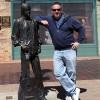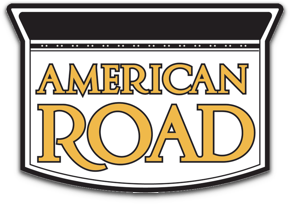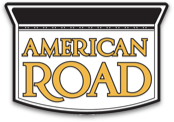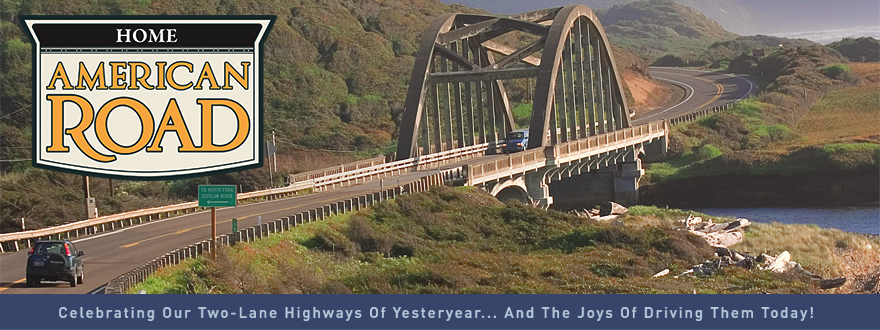-
Posts
447 -
Joined
-
Last visited
-
Days Won
16
Content Type
Profiles
Forums
Gallery
Blogs
Calendar
Everything posted by roadhound
-

Tour For New Lincoln Highway Book
roadhound replied to DennyG's topic in Lincoln Highway / U.S. 30 / U.S. 50
The tour made our hometown paper this morning. http://www.contracostatimes.com/books/ci_6...?nclick_check=1 Roadhound -
Thanks so much for the kind words KtSotR. From your keyboard to the photo editor's screen. I didn't exactly take a hundred of that particular shot but kept it down to about a dozen. I was really pleased with the way that particular Mono Lake shot turned out. I can truthfully say that it wasn't a snapshot and I was very deliberate with shutter speed and f/stop settings. I got exactly what I was looking for. Here's another. I have more but they will have to wait until after I finish processing my Lincoln and Victory Highway pics from the previous trip. The Road across Conway Summit didn't make much sense to me either, especially for the times. The road through Bridgeport Canyon has some rises but nothing that compares to the Conway Route. The terrain would have easily accomodated a 2 and even 4 lane road without to much difficulty. The only advantage I see with the Conway Route is that it shaves 5 or 10 miles off of the total distance to Bridgeport. On To Cottonwood Canyon The road leading in and out of the south side of Bodie is called Cottonwood Canyon Road. It is not hard at all to let the imagination drift while you drive along at a comfortable 35 MPH and imagine the stagecoach or wagon team rounding the bend trailing a cloud of dust. The road itself had a bad case of the washboards which would shake the car pretty good at lower speeds. Coming from the south the road has about a 1500 foot climb before you get to the top and head back down towards Bodie. I did find out during my visit to the Lee Vining Historical Society that there was a mule station near where Cottonwood Canyon Rd, Coyote Springs Rd. and Goat Ranch Cutoff all meet. The station was there to provide fresh teams to the wagon trains going through the two canyons. The foundations of some buildings still remain but I unfortunately found out about them after I journeyed through the area. Cottonwood Canyon Road looking north towards Bodie from the Summit Cottonwood Canyon Southern end of Cottonwood Canyon Roadhound
-
It's about time I started putting some pictures up to illustrate the the terrain that we have been discussing. First let me share a picture of some of the tufa towers found in on the South Shore of Mono Lake. I left the Tuolomne Meadows campground at around 4:00 am and was at the tufa towers as the sun rose. It was the start of a long and fruitful day. As I attempted to explain in a previous posting the road now know as Coyote Springs Rd. was once the primary route between Mono Lake and Bridgeport to the north. The locals know this as Bridgeport Canyon. The road didn't require high clearance although it is a bit rough in spots and there are a few washes were lower riding cars should take it slow. South end of Coyote Springs Rd. just north of Goat Ranch Cutoff looking south towards Mono Lake Coyote Springs Rd. midway between Goat Ranch Cutoff and Bodie Rd. North end of Coyote Springs Rd near Bodie Rd. Coming up next: Cottonwood Canyon Road from Goat Ranch Cutoff to Bodie. Roadhound
-
I believe I found the definitive answer for the 1917 route as well as the origins for the route over Conway summit. During my travel I stopped at the Lee Vining Historical Society and the curator, Norm, was nice enough to confirm my suspicions and correct a few of the assumptions I had. Starting at Main St. (US 395) and Mattly Rd. the original highway followed Mattly Road northward. The route can still be followed today but turns into a gravel road once you cross the entrance to the Mono Basin Scenic Area Visitor Center and begin your descent down the bluff. The original roadway followed the waterfront, which was higher back then, and part of the original road is under the current 395 roadbed. The original route was along what is now Cemetary Road, past the park and the cemetary. Just after the cemetary the road goes from asphalt to gravel. Just after E. Mono Lake Dr. the original road turned northward and now goes under 167 to Goat Ranch Road. The present routing of Cemetary Rd. continues eastward and joins 167 further east. The original section is clearly visible in the satellite images but barely visible from the ground as the sagebrush has taken over. On the 1917 map this area is identified as being brushed, very rough, and sandy. From Goat Ranch Rd. the path turned north through Bridgeport Canyon (Coyote Springs Rd.) and followed Bodie Rd. through to Bridgeport. In the early 20's the owner of the Conway Ranch began to build a road across what is now Conway Summit so that his mule teams could deliver hay to Bridgeport more effeciently. The original path that he cut later became the first 395 roadbed across the summit. Of course, the road has since been altered significantly. Pictures of Bridgeport Canyon, as well as Cottonwood Canyon, to follow shortly (as soon as I have time to download and process them). roadhound
-
I like that picture of the tufa with the snow. I've got to get there in the wintertime. What I am failing to see is the natural connection between Cemetary and Coyote Springs that appears on the older maps. One one hand Cemetary is closer to the lake and in line with the older maps while Goat Springs seems to fit more naturally with the alignment between itself, Cottonwood Canyon, and Coyote Springs where they join. I do notice a dirt trail on Google Earth that takes off of Cemetery at 38,02'33.16N 119,07'04.51 that appears to be buried under 167 as it crosses and connects with Goat Springs. It is not very wide and may not be driveable unless your in a small vehicle. Looks like it is overgrown. I'll plan on driving both Cemetary and Goat Ranch, as well as Mono Inn Rd, and report back. Yes, we did use the GPS and it did come in handy at times. Other times it led us astray and we had to backtrack to get on the proper path. We nicknamed it "Tokyo Rose" since it always seemed to know where we were but sometimes gave us the wrong advice. I would say our success rate was 50/50 with some of the navigational errors being our fault and others being the machines inability to read our minds. Bottom line is that they can be very helpful on the major roads but you need to know where your going when it comes to the backroads, otherwise you could end up following a very narrow 4x4 road through the White Pine Range trying to find the ghost town of Hamilton when staying on the main forest road would have got you there. Not that I would know anything about that, I was just using it as an example. roadhound
-
Keep, Doublecheck me on the coordinates. Starting on CA 167 I will be turning northeast onto Goat Ranch Road at 38,02.772N, -119,09.386W My assumption is that this is approximately the old 395 alignment that is shown on the 1917 and 1923 road maps. Following Goat Ranch Road turn north on Coyote Springs Road at 38,06.046N,-119,03.503W Following the dirt road that is Coyote Springs (I just got the dirt from the last trip off of the Rickmobile) turn east on CA270 at 38,09.703N, -119,08.158 W and follow it into Bodie. Question: is the alignment of CA 270 heading west from this point part of the 1917 alignment of US 395? There doesn't seem to be many other options to getting to Bridgeport from that spot. Leaving Bodie follow Cottonwood Canyon Rd starting at 38,12.452N,-119,00.875W. Cottonwood Canyon turns into Goat Ranch Cutoff just before reaching Coyote Springs Road at 38,06.046N,-119,03.503W. The loop is now complete. roadhound
-

Gang At The Garage... July 27
roadhound replied to Keep the Show on the Road!'s topic in General Discussion
Although I am a little young to remember the garage that you describe your presentation did a masterful job of painting the picture for me. Thank you. BTW, does this garage have a place where I can wash my car? It got a little dusty. I'd even settle for the local high school charity car wash. This was on day 2, before the Pony Express\Lincoln Highway drive. -

Gang At The Garage... July 27
roadhound replied to Keep the Show on the Road!'s topic in General Discussion
The Lincoln Highway was been found and I am happy to report that it is alive and well through Utah and Nevada. I was especially impressed with Nevada and the way they have provided LH road markers along the route(s). We saw many of the concrete markers along US 50 as well as much newer, but smaller, markers of the 4 inch wide by 3 foot tall flexible type along the side of the road. There were also larger 12 x 18 inch roadsigns mounted on poles. The Pony Express Trail through Utah is a dusty one but worth every mile of it. There was one 120 mile stretch from Simpson Springs, through Fish Spring, Ibapah, Tippets, to Schellbourne were we only passed 3 other cars. I think it was about as far away from civilization than I had ever been before. It gives one an appreciation of what the journey was like for early auto travelers (with the exception of air conditioning, more horsepower, more reliable vehicles, graded gravel roads, GPS...) More stories and pictures to come once I get back home and have a chance to go through and process all the pictures I took during the journey. A road weary roadhound -
I can't begin to say how much I wish Michael and Brian's planned stops in California were a month earlier. Yes indeed, I am off on my great adventure tomorrow. One of the great things I have found in the short time that I have been visiting this site is the information that you can get just by asking. A few months ago I didn't know what route the Lincoln took through Utah. Thanks to Keep the Show On the Road, ypsi-slim, DennyG and others not only do I now know that there was a number of different routes but also what to look for along the route that I choose. This is a great group here. Talk to y'all in 10 days give or take. LH Bound Roadhound
-
Welcome FlossmoorLibrarian. Let me be the first to welcome you to this little piece of the internet devoted to the American Road. I look forward to hearing of your LH explorations in Illinois and nearby states. Since you're a research librarian we expect your reports to be fully researched and validated. Roadhound
-
Yes, it is indeed the I Street Bridge in Sacramento. Here's a link with a bit more info: http://home.pacbell.net/hywaymn/tower_bridge_history.htm As the winner of the first quiz you get the honor of posting bridge quiz#2. I am looking forward to seeing what you can pull out of that vast archive of yours. Postcards and photos are all fair game. roadhound
-
You are getting closer. It is geographically between Davis and Roseville and within 10 miles of I-80. Don't forget that it is also a railroad bridge. roadhound
-

Tour For New Lincoln Highway Book
roadhound replied to DennyG's topic in Lincoln Highway / U.S. 30 / U.S. 50
It's OK to be a fan of both, right? As a newbie to road dogging I find them both (as well as the other older roads) fascinating and intruiging. The more I read the more I want to explore and discover what was once there, what remains, and the changes that have taken place in between. One thing you neglected to mention is that centennial of the founding of the L.H. is just around the corner. I believe that as we get closer to that date more communities will realize what they have running through their front yards which will generate more interest. That's my on the subject roadhound -
You are getting warm my friend despite my attempts to muddy the waters by including the reference to Memphis and the road that runs through it. roadhound
-
My bad. It should have been 1697. What I originally wrote was : Let just say its more than a 1700 mile drive between Memphis and the bridge and leave it at that. roadhound
-
Only 1 guess so far? I didn't think this was that tough. Time to pull out the maps and start figuring this one out. Let's recap what we know so far: -The bridge once hosted 2 US Routes, one north-south the other east-west -One of the US Routes no longer officially exists -The other US Route is now 695 miles away -The bridge is at least 1697 miles from Memphis -The number of one of the US Routes that once crossed the bridge is the same number as the Interstate that passes through Memphis. -the bridge is in either California, Nevada, or Utah. Next guess anyone? roadhound
-
Yes Thats 1 question. I will PM you with the info. roadhound
-
Memphis? My brother lives in Memphis, or near Memphis I should say. He lives in Rossville. I will have to remember that you live there next time I go out there to get some tips on places to see. Nope, the bridge is not in Memphis but if you Mapquest the driving directions from the bridge pictured to Memphis 1697 of the miles on the recommended route is an Interstate that is numbered the same as one of the US Routes that went across the bridge.
-

A Tioga Wolf On Us395 At Mono Lake
roadhound replied to Keep the Show on the Road!'s topic in U.S. Highways & Auto Trails
Thanks for posting this string, especially the photos, KTSOTR. I really enjoy seeing those old black and white photos and when you match the location up its magic. Do you think there might be a gene for 2 lane roadways that was passed down from your grandfather? I have one old black and white photo that I would like to match the location of someday. My Great Grandfather was a Superintendant of a section of the Trans Canada Highway in Ontario sometime back in the 20's or 30's and my mother has a picture of him standing on the roadbed as it was being constructed near a summit that was named after him (Bain Summit). I haven't located the summit on a map yet and who knows when I will have the chance to get to Ontario. roadhound -
This combination railroad and auto bridge once carried traffic for 2 US Routes, one was east-west, the other north-south. One of the routes no longer exists and the other is now 695 miles away. Can you name the location of the bridge and the two US Routes that used it? For bonus points what year was the bridge built and when were the US routes moved to a newer bridge?
-

Victory Highway Question; Eastern Nevada & Utah
roadhound replied to roadhound's topic in U.S. Highways & Auto Trails
Good advice for any trip, thanks. Last thing that I want to have happen is for the whole country to hear about my trip on the evening news. To many of those type of stories lately. I had not thought of getting the Sheriff's phone numbers prior to departing, excellent idea. GPS? Believe it or not I don't own one yet. Any recommendations? Believe me when I say that I am taking the preperations very seriously, especially when it comes to the weather. I have already purchased 3 cases of water and have 2-3 gallon jugs that I will also fill up with water. Since we will be camping on part of the trip we will also be packing a fair amount of food at the beginning, mostly prepackaged stuff like fruit cups and the like, that won't require refrigeration. I've got a repair kit for the truck and a fully stocked tool box. If you have a chance to e-mail me the 1908 story I would like to read it to help give me a sense of perspective. roadhound -

Victory Highway Question; Eastern Nevada & Utah
roadhound replied to roadhound's topic in U.S. Highways & Auto Trails
After looking at a multitude of maps, reviewing the turn by turn description provided by Keep the Show on the Road, and exploring the area with both Google Earth and Mapquest I am fairly confident that the section of road between Wells and Cobre that was once known as the Pikes Peak Ocean to Ocean Highway is still there. I am also fairly confident that the PPOO utilized a section of railroad bed that was once part of the Transcontinental Railway and may in fact be the original road bed graded by the CPRR during the original construction. The radius of the curves are just like those that would be have been built for a railroad plus they are alongside the current railroad bed which was likely a replacement for the original. The question of whether or not the road is driveable still remains. The roadbed looks intact on Mapquest, which had a better image of the area than Google Earth, and there doesn't appear to be any areas that are washed out. Only the onsite research can truly determine whether the PPOO still lives. The true test will come when we actually drive it. I will report back at the end of the month. I've printed out the posted scans from the 1916 TIB and 1922 ABB and we will see how accurate they are. roadhound -
Nothing wrong with your picture Cityboy1968, keep them coming. It's very interesting the way that the earth has been removed right up to the supports. They really didn't want anybody driving on that bridge. Be careful Keep the Show on the Road! Don't let that fame go to your head. roadhound
-
The key is practice, practice, practice. Back in the day when I was shooting film I would be happy if I got 1 really good picture out of a roll of 24. Even with digital the percentage of successes is still about the same except that the cost per image is a lot less now than with film. I have on occassion shot as many as 600 pictures in a single day. So go forth and take pictures...of a bridge, and post them on this forum!
-
Thanks so much Jim. I try to stick to the basics as much as possible, use the rule of thirds, try not to have the focus of the picture in the center of the frame, etc. The other thing I do is take lots of pictures. "Let's hear it for digital! For every one of the shots that I posted their is 15 or 20 shots at different exposure levels, different focal lengths, different angles... I know what you mean about a road running through a picture. The eye naturally follows the road in any picture and if you position it properly in the frame the viewer is drawn into the image and you have their interest. It's a tool that I try to use often. Rick



